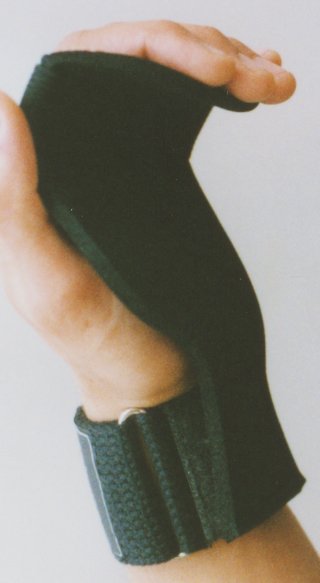HGB Newsletter #04 April 2009
This newsletter will be sent to you on a monthly basis. Every newsletter will have new workouts, tips and information as well as links to whats new on the website.
In previous newsletters, I discussed protein requirements. This newsletter focuses on cutting carbohydrates. I found the article below during one of my internet surfing sessions. When I find out (or remember) who the author is, Ill give them credit.
More and more people these days are venturing into the land of low-carb dieting. Touted as one of the best ways to strip the body fat off yourself and then coupled with new research that is showing that lowering carbs can help you maintain a better health profile, it's no wonder that almost everywhere you turn there are low carb products around.
One of the big issues with any very low carbohydrate diet however is being able to maintain enough muscle glycogen so that you can effectively work out.
Whenever you want to perform high intensity exercise of any form, your body is going to primarily rely on glucose or muscle glycogen (stored glucose) as a source of fuel. Due to the energy system involved in this type of exercise, it simply cannot run off of protein or fat.
So if you are on a very low carb diet (classified as 50 grams of carbohydrates per day or lower), you are going to have to find a way to somehow replenish your muscle glycogen levels or else the only option is to only perform moderate intensity exercise.
One way of doing this is by supplying carbohydrates strictly around the workout period.
Right before and after exercise is a good time to add the carbohydrates to your diet because firstly, this is when the muscles need them the most and secondly because there is a slightly smaller chance they will cause blood sugar issues for individuals who typically experience these sorts of problems (and why they are choosing a low carbohydrate diet in the first place).
How many carbohydrates and when will depend on your goals and the type of workout you are doing.
The more energy demanding your workout is (think in terms of volume of work performed here), likely the more carbohydrates you will need to maintain your muscle glycogen stores.
If you require a very large amount, then you likely will want to eat them both pre and post workout, since eating a very large amount right before could make working out uncomfortable and similarly, many find that not eating any beforehand leads to them feeling fatigued during their workout.
If you don't require a great deal of carbohydrates however for the workout you are going to be doing, then you could either do them pre workout or post-workout.
Probably the better choice here is to have some pre-workout. The reason for this being that they will help give you slightly more energy for your workouts (in most cases - some people find they can work out better when they don't have carbohydrates in their system, but this is much more rare), plus these carbohydrates that you take in before your workout will actually be working to replenishing your muscle glycogen stores after your workout is complete, therefore preparing you for tomorrow's exercise session.
Taking them in the post workout period will essentially do the same thing as well, however then you might run into more problems with dropping blood sugar levels later on in the day.
When you take them before the workout, your muscles will be using them up so that by the time you are finished and then have had another post-workout meal (consisting solely of protein now), the sugar will likely be out of your system so you won't see that 'drop' that can otherwise be seen.
Additionally, some individuals who are very sensitive to carbohydrates tend to find that once they start eating, it leads to a full-out binge so having them post-workout could become an issue in that respect.
So if you are currently doing a low carb diet but want to include intense exercise in your program, you need to find a way to incorporate slightly more carbs into your intake somehow. The best option is centered right around the workout period, with pre being slightly better than post, however if a large amount is to be consumed, likely you will want to do both before and after intakes.
The Seven Dietary Habits:
- Eat every 2-3 hours, no matter what. You should eat between 5-8 meals per day.
- Eat complete (containing all the essential amino acids), lean protein with each meal, such as lean meat (this includes gland meats, fish, and poultry), eggs, cheese, milk, millet and sunflower seeds are complete proteins, that is, they contain all 10 of the essential amino acids in correct proportions for maximum human nourishment.
- Eat fruits and/or vegetables with each food meal.
- Ensure that your carbohydrate intake comes from fruits and vegetables. Exception: workout and post-workout drinks and meals.
- Ensure that 25-35% of your energy intake comes from fat, with your fat intake split equally between saturates (e.g. animal fat), monounsaturates (e.g., olive oil), and polyunsaturates (e.g. flax oil, salmon oil).
- Drink only non-calorie containing beverages, the best choices being water and green tea.
- Eat mostly whole foods (except workout and post-workout drinks).
Low Carb Veges:
- Sprouts (bean, alfalfa, etc.)
- Greens lettuces, spinach, chard, etc.
- Hearty Greens - collards, mustard greens, kale, etc.
- Radicchio and endive count as greens
- Herbs - parsley, cilantro, basil, rosemary, thyme, etc
- Bok Choy
- Celery
- Radishes
- Sea Vegetables (Nori, etc)
- Broccoli
- Cauliflower
- Cabbage (or sauerkraut)
- Mushrooms
- Jicama
- Avocado
- Cucumber (or pickles without added sugars)
- Peppers (all kinds)
- Summer Squash (including zucchini)
- Scallions or green onions
- Asparagus
- Bamboo Shoots
- Leeks
- Brussels Sprouts
- Snow Peas (pods)
- Green Beans and Wax Beans
- Tomatoes
- Eggplant
- Artichoke Hearts
- Fennel
- Onions
- Okra
- Spaghetti Squash
- Celery Root (Celeriac)
- Carrots
- Turnip
- Water Chestnuts
- Pumpkin
Low carb fruits:
Fruits lowest in sugar:
- Rhubarb
- Strawberries
- Cranberries
- Raspberries
- Blackberries
- Blueberries
- Grapefruit
- Melons
- Apricots
- Plums
- Peaches
- Pears
- Guava
- Cherries
- Apples
These are fairly high in sugar:
- Grapes
- Tangerine
- Oranges
- Pineapple
Fruits very high in sugar:
- Bananas
- Dried Fruit
- Mango
I continue to receive favorable email reviews about the New Grips workout gloves. Ive been using them in my workouts and will continue to do so. I highly recommend them. Check out my review here.

Instead of posting Aprils workout, check out my review of Chad Waterburys book Huge in a Hurry. I guarantee Huge in a Hurry will provide a routine you probably haven't done before.
What's new on the site?
Chad Waterburys Huge in a Hurry book review
Coming soon on the site:
Pull-up rope for power rack
Homemade power rack plate holder
Possibly a review of Ironmasters new kettlebell handle (stay tuned)
Until next month .Keep Liftin
Barry C.
If you liked this newsletter, please consider forwarding this page to a friend.
Comments
